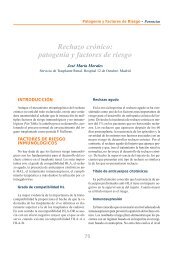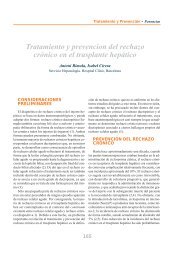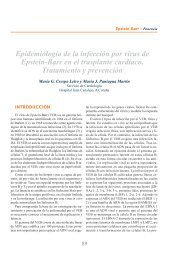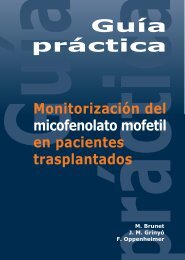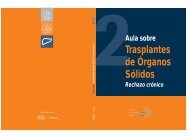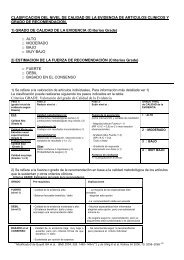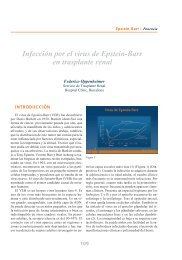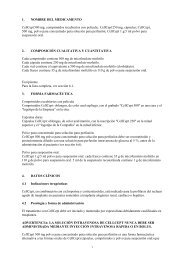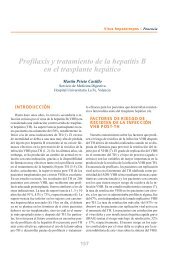Untitled - Roche Trasplantes
Untitled - Roche Trasplantes
Untitled - Roche Trasplantes
You also want an ePaper? Increase the reach of your titles
YUMPU automatically turns print PDFs into web optimized ePapers that Google loves.
BIOPSIA DE PROTOCOLO EN EL TRASPLANTE RENAL<br />
rounding the presence of anti-HLA antibody at the time of and subsequent to chronic allograft<br />
failure, it has taken many years to piece together the events that surround chronic<br />
humoral rejection. The turning point has come with the development of reliable techniques<br />
to detect the complement component C4d on the membrane of endothelial cells in<br />
the allograft and engagement with the Banff schema (42). Anti-HLA antibody is now<br />
known to predict a poor long term outcome (43) and the immune consequence of antibody<br />
binding to complement on the endothelial cell surface to preceed transplant glomerulopathy<br />
(44). Experimental evidence is now also linking these phenomena perhaps<br />
explaining one of the underlying mechanisms for vascular disease in the allograft (45).<br />
The recent demonstration of antibody to agrin –a component of the glomerular basement<br />
membrane– may explain the poor correlations between anti-HLA antibody and glomerulopathy<br />
(46). Transplant glomerulopathy is clearly identified as a cause for long term graft<br />
loss (47).<br />
Ischaemic glomerular sclerosis<br />
Associated with other features of chronic allograft nephropathy, seen progressively from<br />
three or four years post-transplantation (48). In the early post-transplant period glomerular<br />
loss is associated with generalised ischaemic damage but is quite restricted in extent,<br />
at least in younger donors. The later and more significant phase of glomerular loss follows<br />
as a consequence of earlier interstitial fibrosis and arteriolar hyalinosis (48). The severity<br />
of interstitial fibrosis at one year correlated with the severity of glomerulosclerosis<br />
at four and five years, but even grafts with no interstitial fibrosis eventually developed<br />
glomerulosclerosis. A second factor influencing glomerular destruction was shown to be<br />
the severity of arteriolar hyalinosis, with substantial increases in the percentage of sclerosed<br />
glomeruli for each grade increase in Banff designated arteriolar hyalinosis. These<br />
factors are familiar from prognostic studies in native renal diseases such as IgA nephropathy<br />
and it should come as little surprise to see the influence apparent in transplanted<br />
kidneys. Thus glomerulosclerosis is associated with both the results of acute and untreated<br />
subclinical rejection, perhaps accounting for the correlations between chronic graft<br />
loss and early acute rejection noted in the 1980’s and 1990’s, as well as with indices of<br />
CNI nephrotoxicity, especially arteriolar hyalinosis.<br />
Prevalence of chronic allograft nephropathy<br />
The prevalence of CAN may only be determined from protocol biopsy of unselected patients.<br />
All studies that report the prevalence of CAN based upon functional indices or selected<br />
histology driven by clinical indications dramatically underestimate the true prevalence.<br />
There is no doubt that the prevalence of CAN depends upon many factors including<br />
the donor age, indices of ischaemia and rejection, and upon the immunosuppression<br />
used. One controlled study of cyclosporine compared to tacrolimus showed a prevalence<br />
of CAN at two years to be 72.3% and 62.0% at two years respectively (19). The<br />
22




